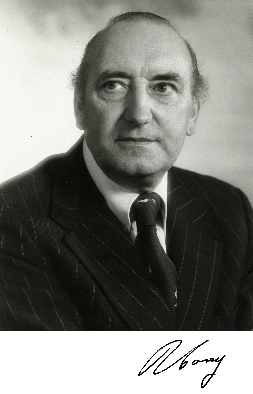Raymond Casey (geologist) facts for kids
Raymond Casey (born October 10, 1917 – died April 26, 2016) was an important British geologist. Geologists are scientists who study Earth's rocks, history, and processes. Casey spent his life researching ancient rock layers and fossils. His work helped us understand more about Earth's past.
Contents
Early Life and Studies
Raymond Casey was born in Folkestone, Kent, England. He went to St. Mary’s Higher Grade Boys School in his hometown. After serving in the RAF during World War II, he began working for the Geological Survey. This is a group that studies the geology of a country.
Researching Ancient Rocks
At the Geological Survey, Casey researched very old rock layers. These layers are called Palaeozoic stratigraphy. In the mid-1950s, he went to Reading University to earn his PhD. For his special project, he studied the Lower Greensand rock deposits. These rocks are found in parts of England.
Major Discoveries
Raymond Casey became a leading expert in understanding Earth's history. He focused on the Mesozoic Era, which includes the Jurassic and Cretaceous periods. This was the time when dinosaurs lived!
Honored for His Work
In 1970, Raymond Casey was elected a Fellow of the Royal Society. This is a very high honor for scientists in the United Kingdom. They recognized him for his deep knowledge of rocks and fossils. His field observations and discoveries helped explain how rocks formed in England. He especially focused on the Lower Cretaceous period.
Studying Ammonites and Shells
Casey's work on ammonites was very important. Ammonites were ancient sea creatures with spiral shells. His studies changed how scientists understood the rock layers. This was especially true for the time when the Jurassic and Cretaceous periods met in Northern Europe. He also studied the hinge structures of bivalve shells. Bivalves are creatures like clams and oysters. By looking at these hinges, he helped scientists figure out past climates.
Later Career and Hobbies
Raymond Casey retired from the Geological Survey in 1979. However, he didn't stop his research. In 1994, he joined the British Museum. He became an Honorary Research Fellow there. This allowed him to continue studying the Lower Greensand, which was his lifelong passion.
Other Interests
Besides geology, Raymond Casey had another big interest: stamp collecting, also known as philately. He was especially interested in Russian stamps. He even became president of the British Society of Russian Philately. He was also a Fellow of the Royal Philatelic Society.
Raymond Casey passed away in 2016. He was married to Norah Pakeman and they had two sons.


